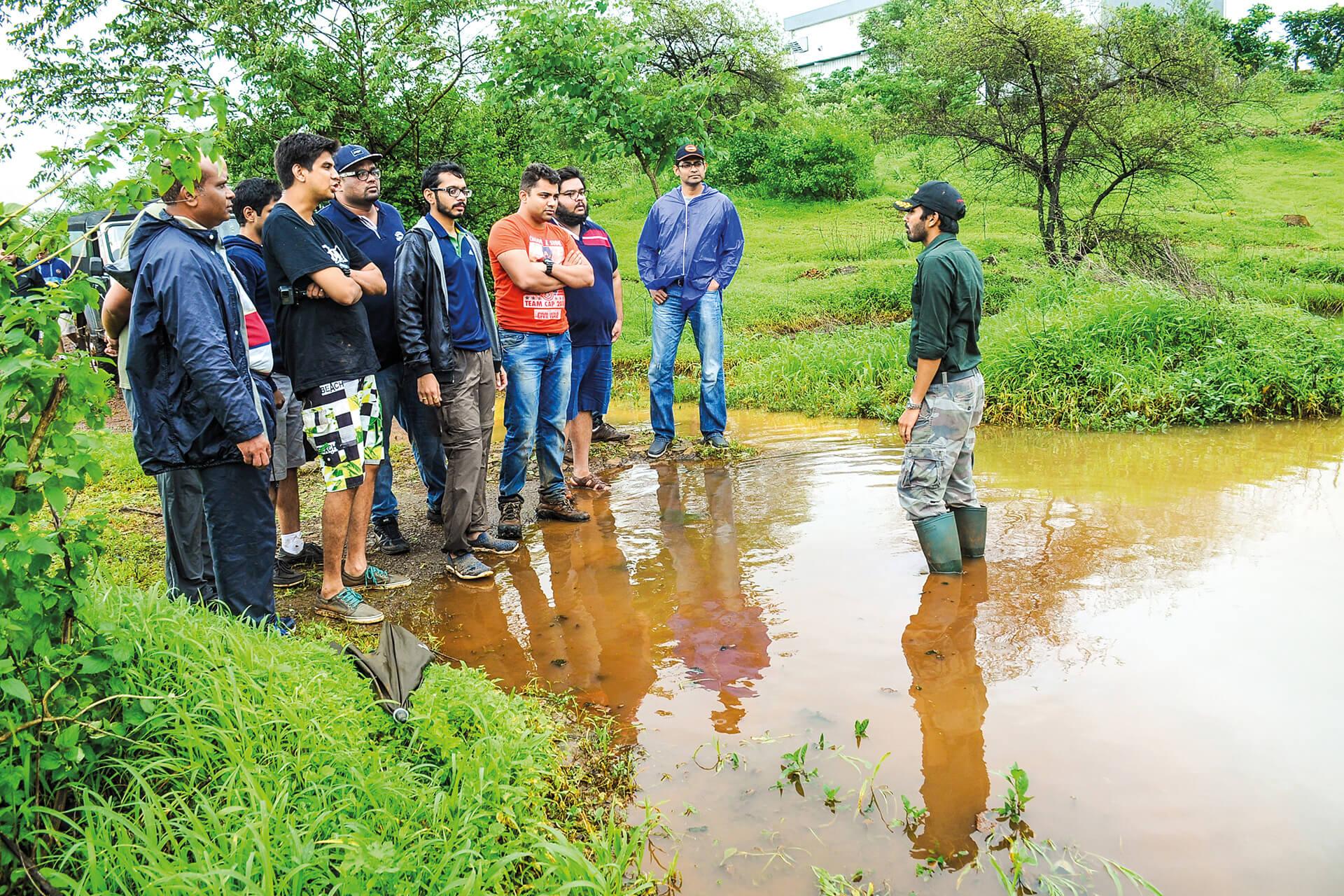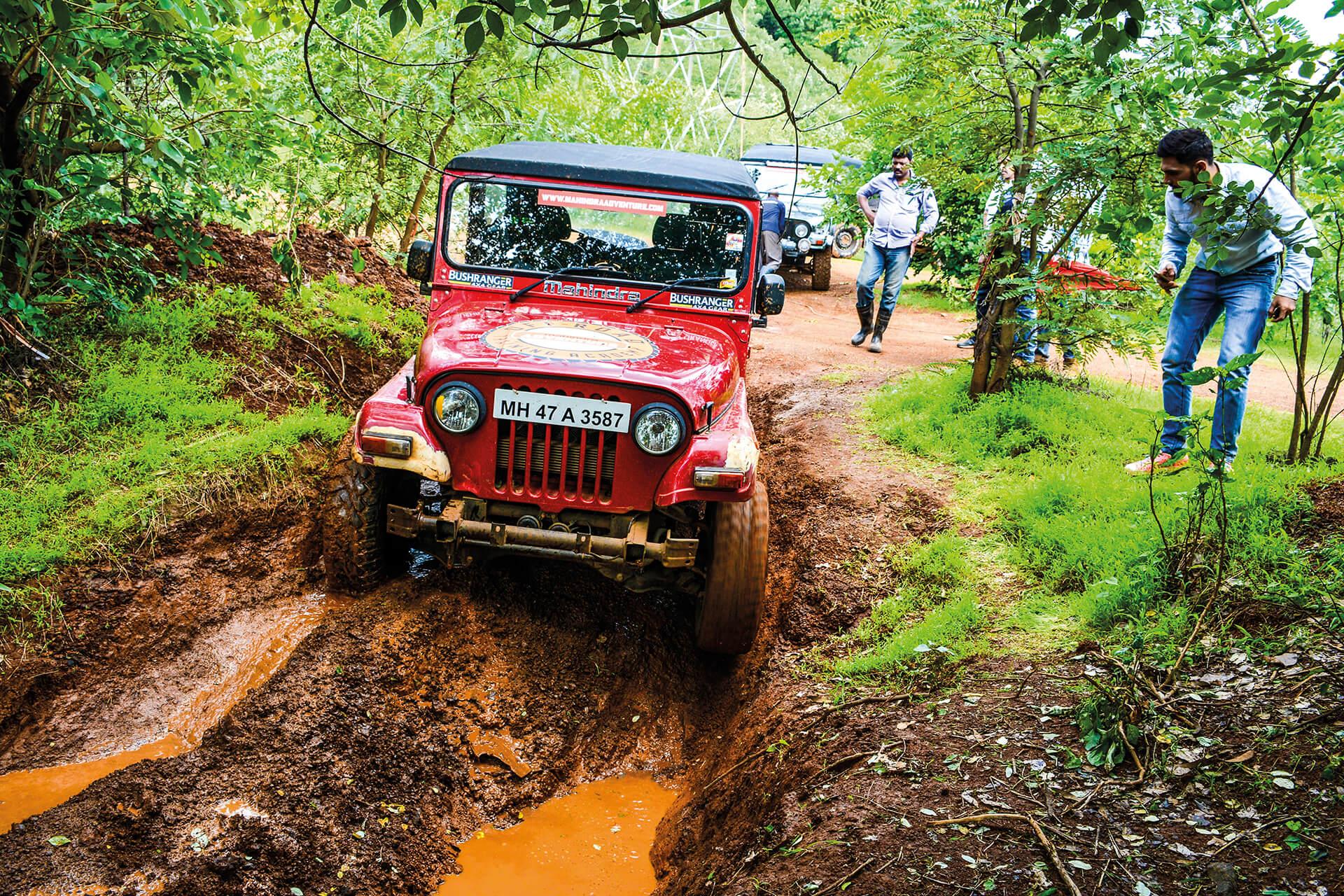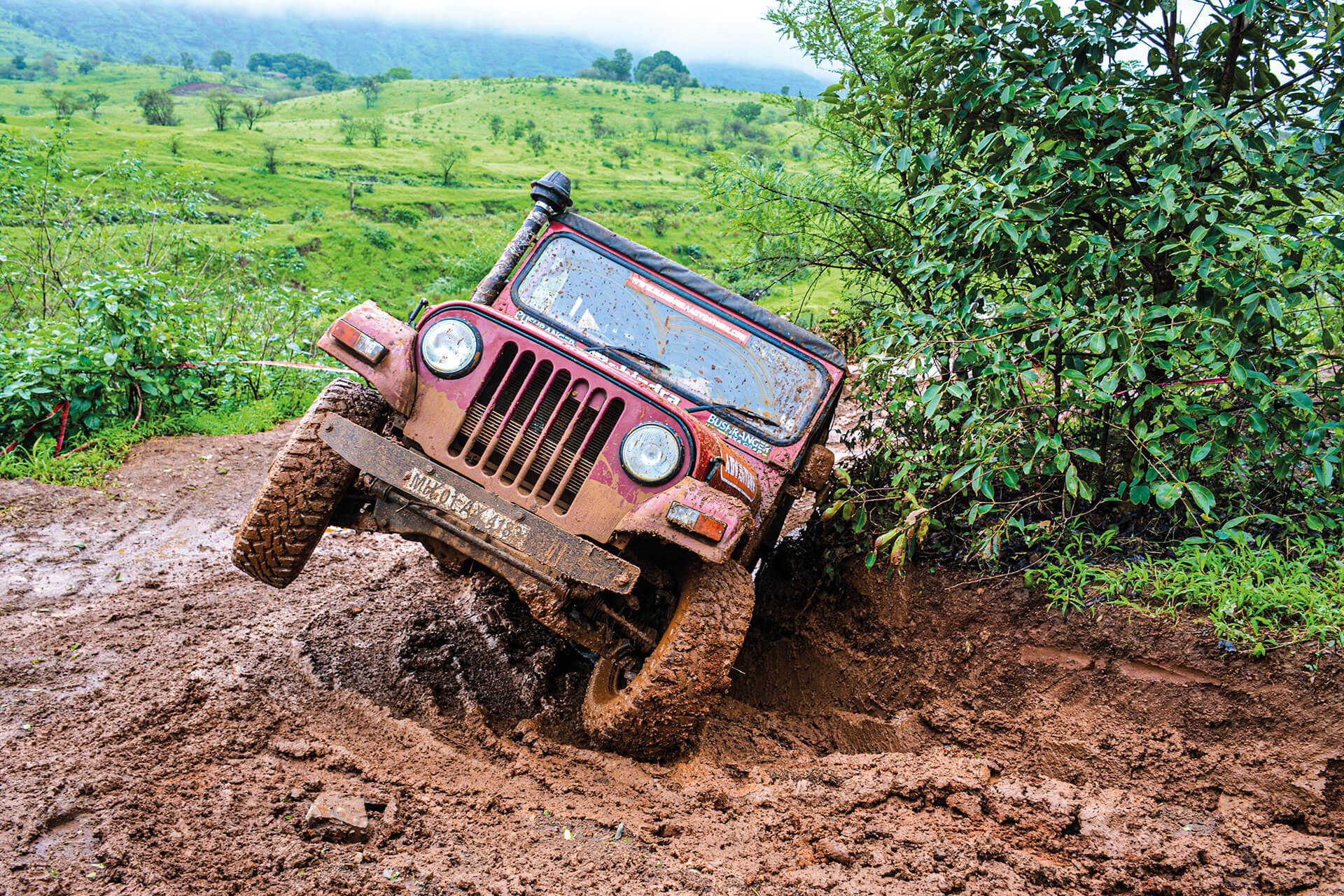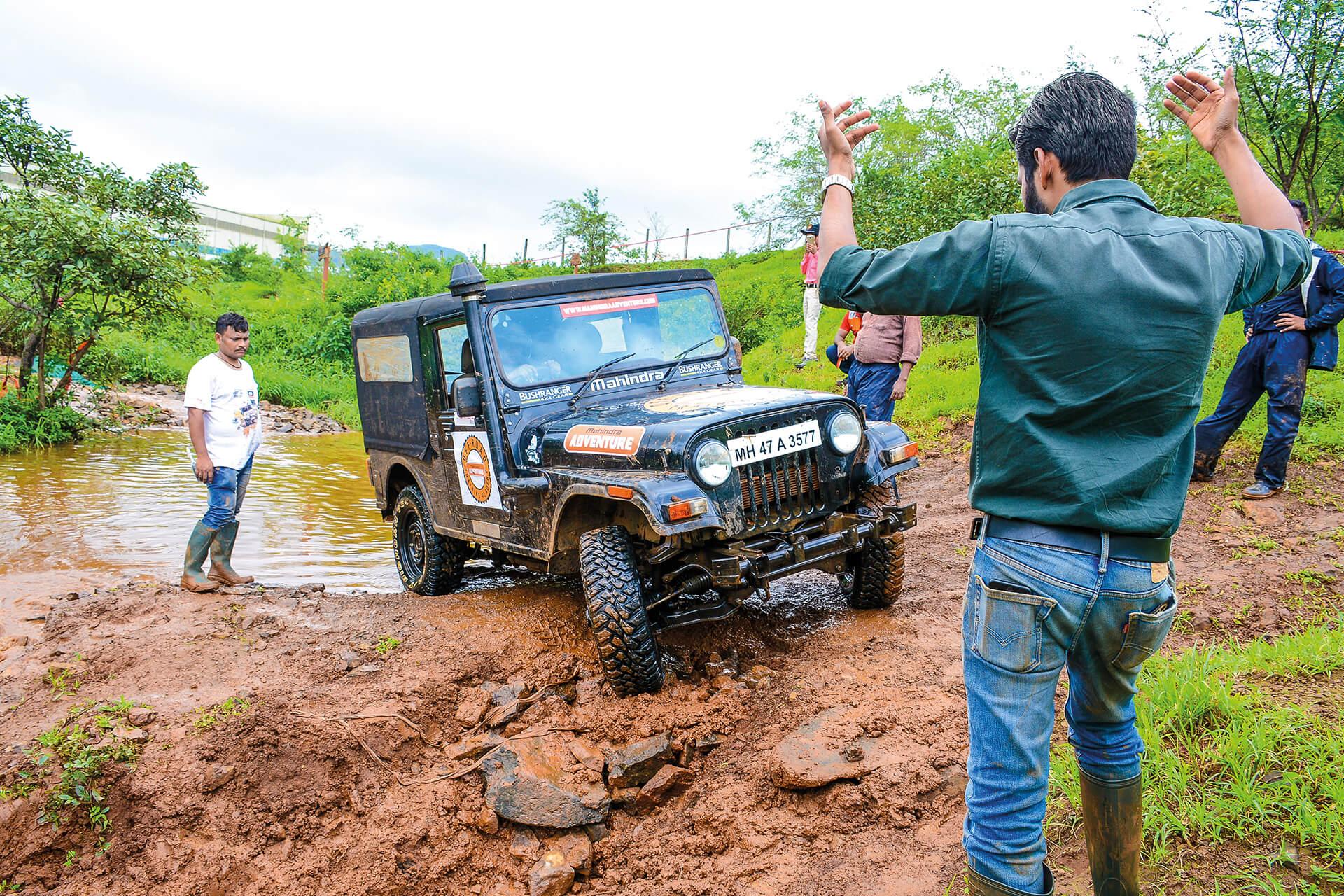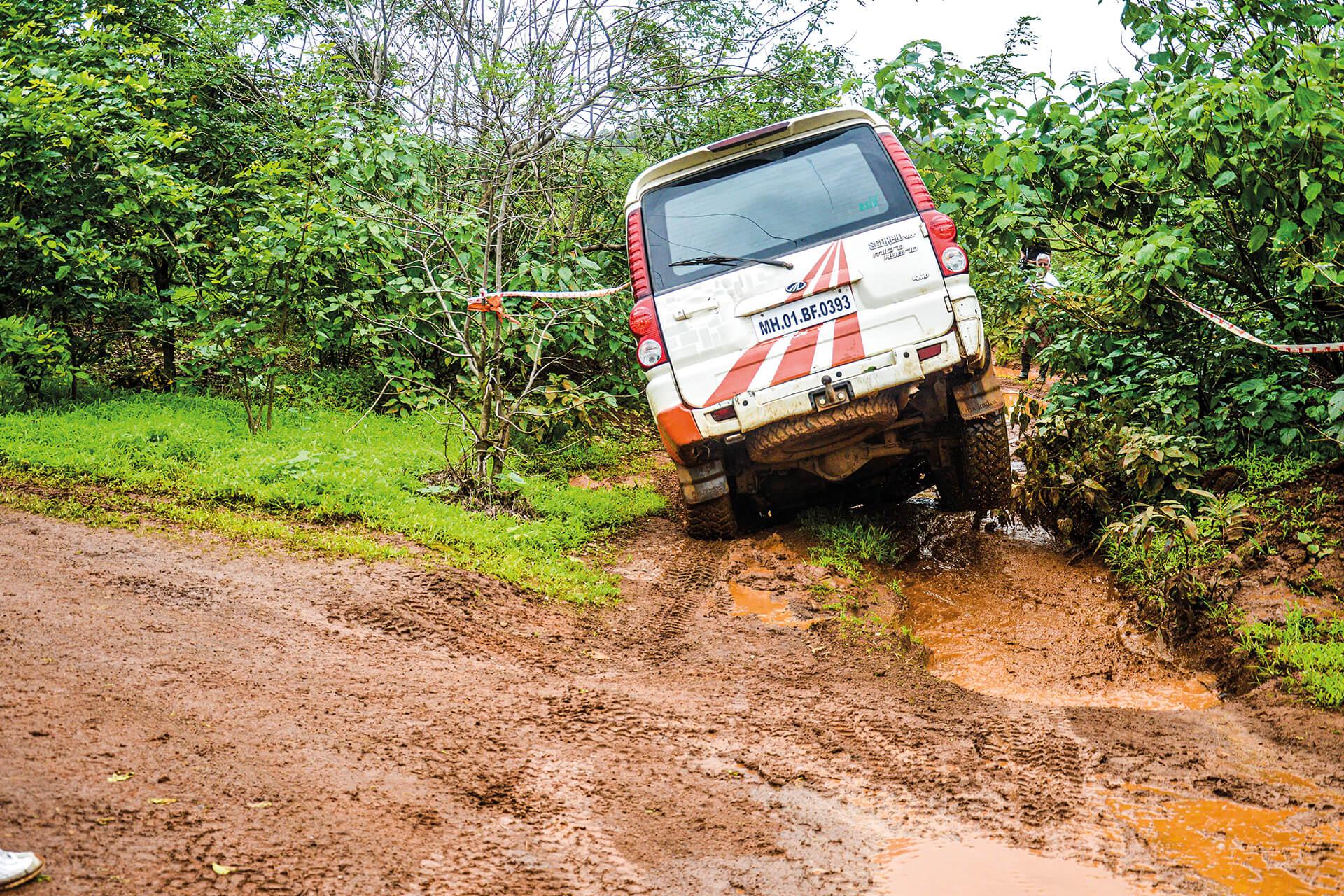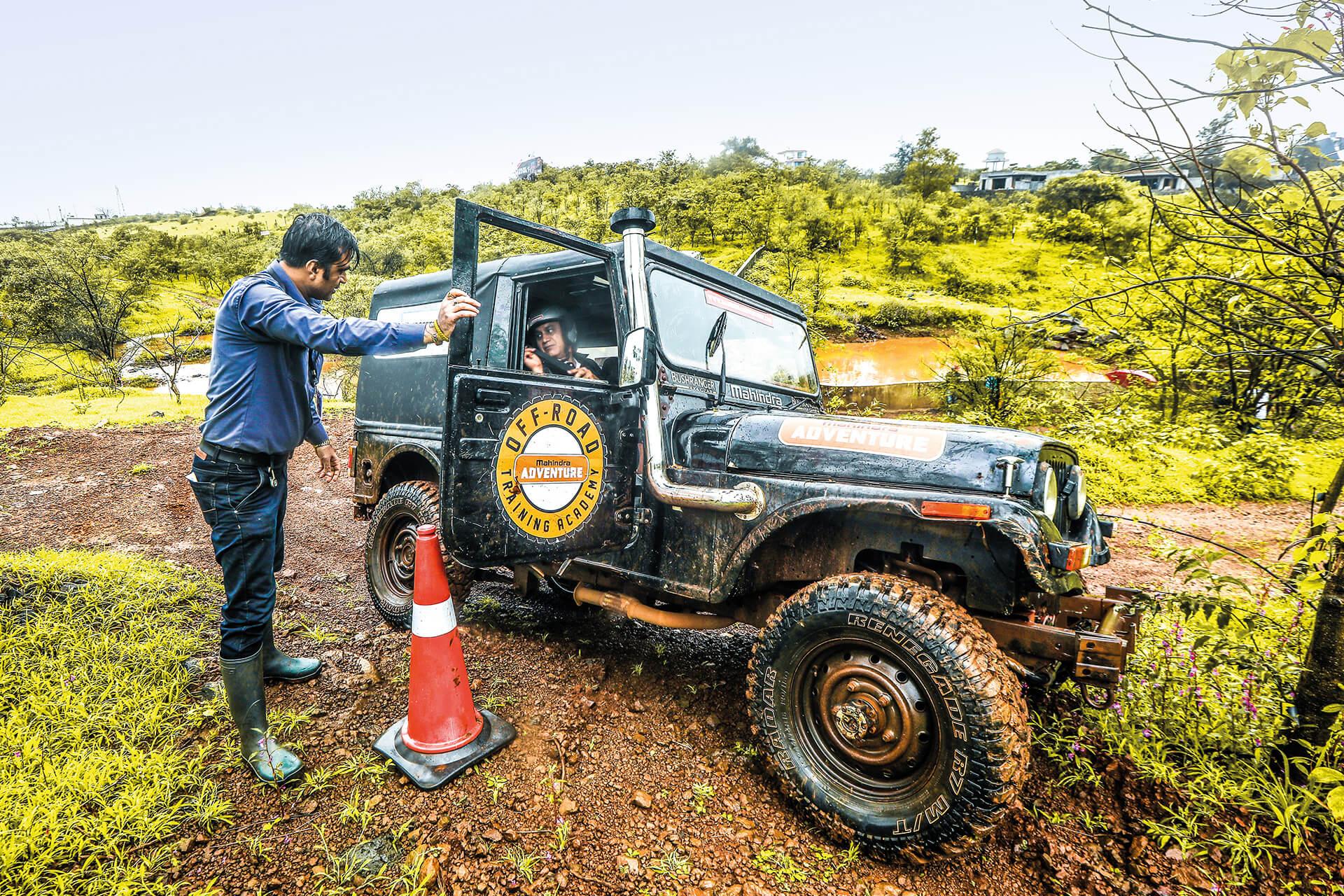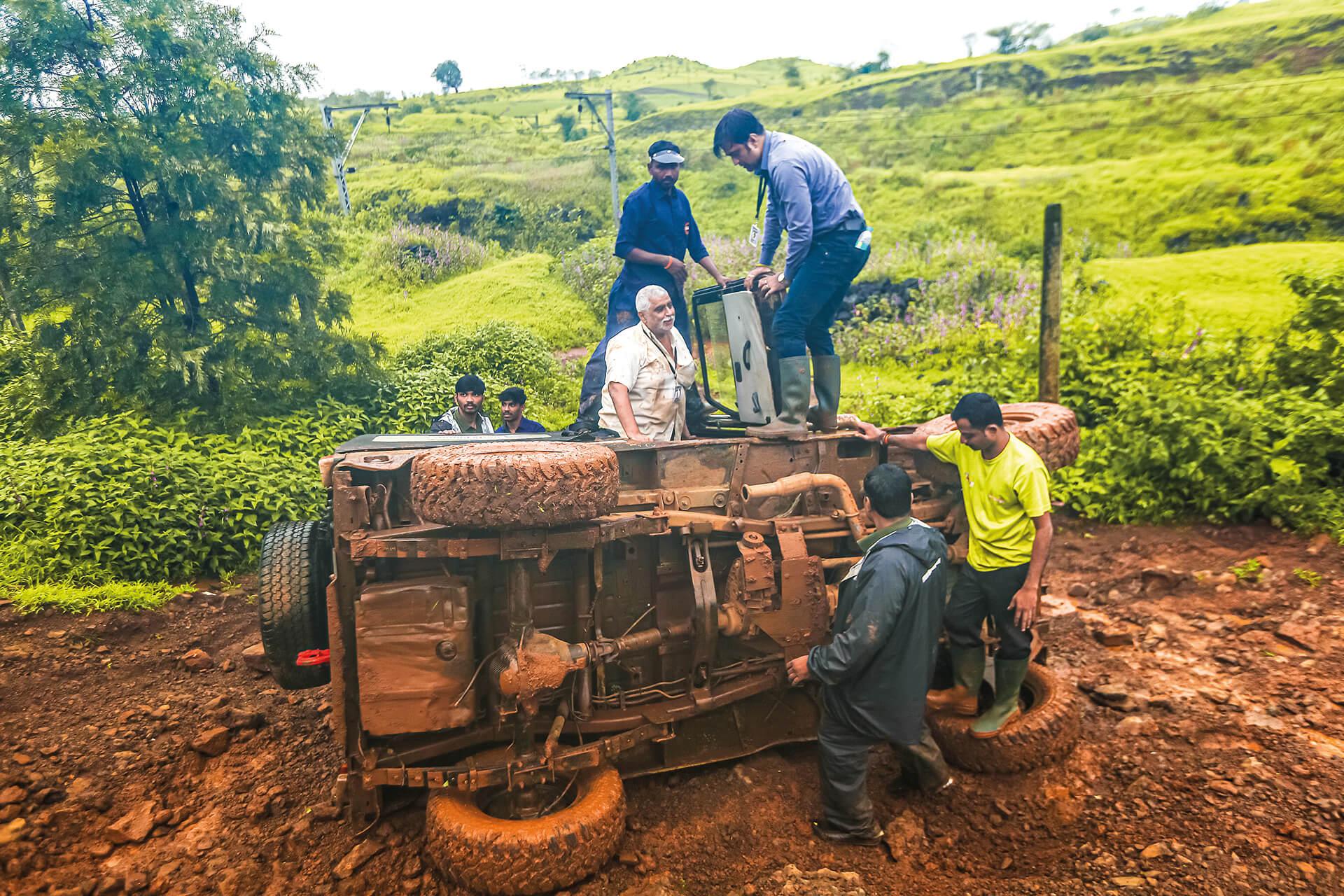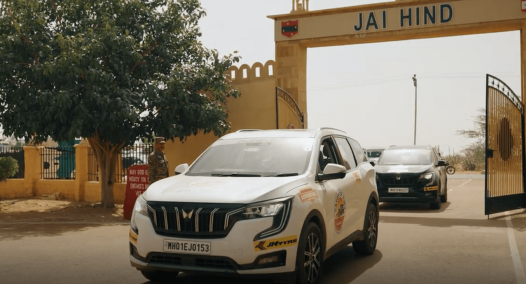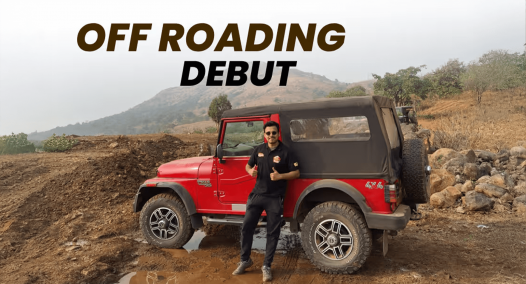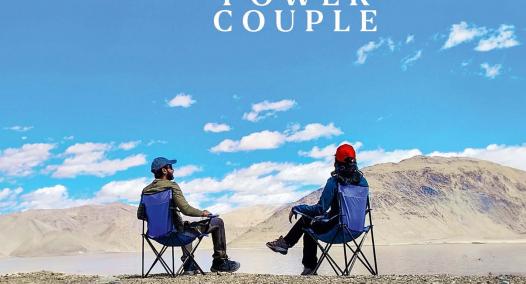Now I do get stuck all the time and where I used to get stressed out by the thought of getting stuck, experience has taught me to see things differently. I find that getting stuck is easy but the real fun is in the getting unstuck bit. I think it is both a science and an art. In this chapter we will cover basics that are often ignored.
Back to basics: Know your vehicle
I have a lot of money and I will build the biggest, most unstoppable rig the planet has ever seen. STOP!
If you ask me, before you blow a whole bunch of greens (purple, magenta, orange and whatever in Indian currency colours) on buying the best tyres and the best off-road equipment out there, invest time in learning how to drive your vehicle in its stock form. That time invested will reveal to you your vehicle’s abilities and more importantly, its limitations. Remember, just because you have a 4x4, doesn’t mean it is invincible. While it is tougher than most other cars, you can and will break it if you don’t respect its limitations. Off-roading and wear and tear go hand-in-hand but knowing when to push and when to not ensures your bills are minimised. These limitations could be weak points on the vehicle for example – a low hanging exhaust or an unprotected clutch pipe.
The time invested in learning how to drive your vehicle will also teach you best how to modify your vehicle to improve it for what you need it to do. A snorkel on a vehicle used only for the commute will make you look silly no? Well, maybe not in Mumbai but you get the picture.
Time will also acclimatise you to your engine’s power delivery which in turn will help you grab the right gear and ensure there’s go when you press the go pedal. For example, a petrol engine with peaky power delivery means you need lots of throttle to get it to its torque band which translates into higher obstacle crossing speeds. A turbocharged diesel on the other hand with high torque at low rpms is a lot easier to handle, but then you have to know the peak torque rpm range to avoid getting into the devil’s corner of turbo-lag. Knowing these things helps one work around the character of the vehicle when tackling an obstacle.
Other key things to learn – the approach angle, ramp-over angle and the departure angle of your vehicle. The smaller these angles are, the quicker you will hit the front bumper when approaching a steep incline, the more often you will find yourself beached with all four wheels in the air and the sooner you will drag your tail when exiting a steep descent respectively.
Yes, that time you spend learning your stock vehicle’s limitations is very crucial. It is the gold standard of learning off-roading for newbies.
The captain’s chair
Next up is how to sit correctly in your vehicle and no, Snoop Dogg’s hunch behind the wheel isn’t the ideal way.
The correct driving position is the one where you don’t have to stretch to reach any of the controls but that’s not all. You also have to get your body in such a position that it is safe in case you bump into something or worse, roll over it.
To get the best seating position, position your seat at the highest point with ample gap above your head, your head must be well below any hardpoint or a rollover bar. For seatback angle and seat length, get a position that allows your arms to form a 45-degree angle at the elbow with hands at 10-2 position on the steering wheel.
Press the brake pedal fully and if your entire leg is stretched out in a straight line, you’re sitting too far away. Adjust the seat, so that when you press the brake pedal fully, your knee makes a slight angle. A folded knee absorbs shocks better than a leg fully stretched out that can fracture bones if you were to hit something hard at speed.
Also needless to say, whether you go off-roading for a hobby or your commute involves traversing the Himalayas, investing in a good pair of gloves, helmet and a roll cage is a very good idea.
Unlearning bad habits
Most people develop a few bad driving habits. The fact that they do isn’t important but correcting it is. These habits could range from something as simple as riding the brake or clutch to not using engine braking to slow down.
I’ve noticed that a lot of seasoned drivers have the habit of pressing the clutch along with the brake pedal when stopping the vehicle. This is wrong. In the off-road world, the brake pedal is your secondary stopping device, the main stopping power comes from engine braking. The clutch is used only to select a gear and should never be ridden during the drive as it not only hampers the engine from delivering all the power to the wheels but also ensures premature clutch wear.
Another bad habit a lot of us have is overcontrolling. In off-road scenarios, a vehicle tends to do what the terrain dictates and doesn’t necessarily follow your control inputs. However, it’s not a good idea to correct the vehicle for every disturbance it encounters. Steering authority on low traction surfaces is reduced in any case, hence, fine tuning is not easy. One must let the vehicle do what it wants, but try to give it a rough general direction you want to go in. Too many corrections on the steering not only increases your workload, but also increases drag on the front axle which means you’ll get stuck faster. Remember the wheels work best, when they’re pointing straight.
Reading the terrain Anticipation and reading of the terrain are very important. It ensures you’re prepared and not taken by surprise. Reading of the terrain means watching for traction levels and slope angles. For example, mud has less traction than gravel and hence will require more momentum and speed. It’s a good idea to generate momentum just before entering the obstacle rather than trying to do it while you’re in mud or climbing a steep incline.
Slope angles could mean uphill, downhill and side slopes (bank angles). Uphill and downhills are easier to handle. However, bank angles require little more skill because especially on low-traction surfaces, the vehicle will slide in the direction of the slope and that must be compensated for by choosing the right line and steering angles. All this comes with experience, however, if you follow these basic rules, you’ll learn quicker.
The home run
As you’ve correctly guessed, this isn’t a comprehensive guide to driving off-road because there is no comprehensive guide to drive off-road. Driving off-road has so many different scenarios and so many different kinds of surfaces that it takes experience and time to reasonably master them. If you can understand that getting the basics right means less work for you and the vehicle, you’ve learnt an important lesson for now.
Get the basics right, invest in good training, unlearn your bad driving habits, know your vehicle’s limitations and improve your terrain reading skills and you have a solid base to start your adventures from. All the best and in the next issue of this magazine, I will talk about one of the most tiring surfaces to drive on – deep sand. Until then. Keep mudding!
NEXT ISSUE
We dive deeper into the subject of defining your off-road mission and how to prepare your vehicle for off-roading

